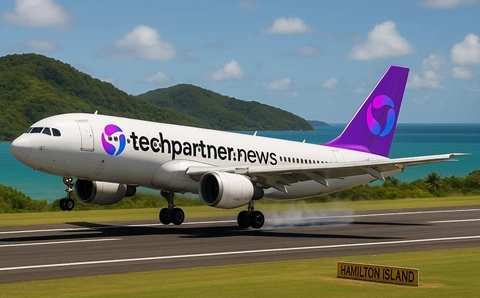Telstra has unveiled its extensive Connected Future 30 strategy at an investor day presentation in Sydney, outlining its plans to change how the telecommunications incumbent extracts value from its network infrastructure through advanced programmability and artificial intelligence.
The newly launched strategy may be seen as a response by Telstra to the "dumb pipes provider" situation, in which telcos are are reduced to mere connectivity suppliers whereas over-the-top (OTT) services such as Netflix, Google and Meta capture most of the value, through data consumption.
Telstra is now seeking to capitalise on its mobile and digital infrastructure, while keeping costs down, and business efficiency up, to maintain shareholder happiness.
"We're at an inflection point, as technology and connectivity are transforming again," Telstra chief executive Vicky Brady said at the investor day presentation.
"Customer needs are changing, and the connectivity we provide has to get more sophisticated and flexible. There's no version of the the future that doesn't rely on technology, and it all needs to be connected."
The strategy is aimed to position Telstra to become "the number one choice for connectivity in Australia" through three interconnected layers: customer engagement, network as a product, and digital infrastructure.
It involves a reconceptualisation of Telstra's network from traditional connectivity infrastructure into a programmable platform that can be packaged and sold with specific attributes ranging from quality of service to security features.
The presentation talked about three factors driving Telstra's thinking: changing customer connectivity needs requiring better and more flexible solutions, along increasing demand for new devices and use cases.
Network as a Product architecture
The Network as a Product initiative will involve the telco taking advantage of its Telstra Autonomous Network (TAN), which uses artificial intelligence for self-configuring, self-optimising, and self-healing network properties.
An autonomous network architecture marks a move from current static and manual optimisation based on average customer needs, to dynamic, intent-based optimisation meeting real-time requirements.
Manual operations and reactive troubleshooting will give way to predictive monitoring and self-healing capabilities designed to avoid customer impact entirely, in Telstra's plan.
Complex integration and manual service exposure will be replaced by programmable, intent-driven interfaces supporting new modes of value capture.
Overall, the general idea is to enable the network to function as a platform supporting multiple business models simultaneously.
The technical implementation includes several network attributes that Telstra believes can be productised and monetised.
Among the ones listed by Telstra are control mechanisms for customer management, and financial predictability features, along with location-specific capabilities.
Observability for real-time insights, quality differentiation options, resilience guarantees and security features embedded at the network level are also part of the network attributes.
Scalable business models and API integration
The presentation talks about business models enabled by "network sophistication" such as pay-as-you-go models usage-based charging, and subscription and tiered models that offer predefined service inclusions.
Revenue sharing agreements meanwhile will provide agreed percentage splits for API [application programming interface] providers that build services on top of Telstra's network, making use of services such as location and network quality data.
Global API aggregators such as Aduna are expected to be enablers for Telstra, to expose standardised APIs to businesses, enterprises and developers.
Infrastructure investments and capabilities
Connected Future 30 includes infrastructure commitments exceeding $4 billion in capital expenditure and spectrum investments over 10 years.
Technical targets include achieving 91 per cent 5G mobile population coverage and Telstra maintaining its claimed mobile coverage leadership.
Telstra's intercity fibre network, described as Australia's largest terrestrial intercity network in the presentation, will expand significantly.
The Sydney-Canberra coastal route is scheduled to go live on 25 June this year, featuring 144 fibre pairs per route with 60 terabits/s capacity per fibre pair.
All in all, the Intercity fibre deployment is part of a domestic Telstra network that spans more than 250,000 kilometres of fibre.
Digital infrastructure expansion
Digital infrastructure, managed through InfraCo and Amplitel subsidiaries, forms the third pillar of Telstra's strategy.
InfraCo will deliver intercity fibre and associated revenue objectives, while providing solutions supporting AI and explore new connectivity growth opportunities.
Amplitel is Telstra's cellular towers business, formerly known as InfraCo Towers, that the telco said has built 300 new sites with 400 under development.
The towers business also operates the largest digital twin program in Australia and New Zealand, with 90 per cent of mobile sites digitised.
The telco counts 30 subsea cables systems that it has interests in, of which three are fully owned by Telstra.
Demand drivers
Market fundamentals said to be supporting the strategy include Australian internet backbone traffic growth, forecast to to be greater than 25 per cent between 2025 to 2029.
Mobile usage has also seen tripled data usage over the past five years, with approximately 1-2 per cent annual population growth expected adding to demand.












.jpg&w=100&c=1&s=0)
_(8).jpg&w=100&c=1&s=0)









